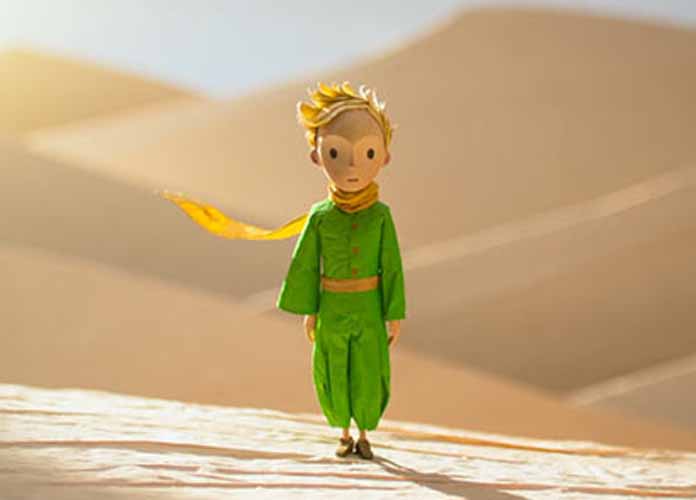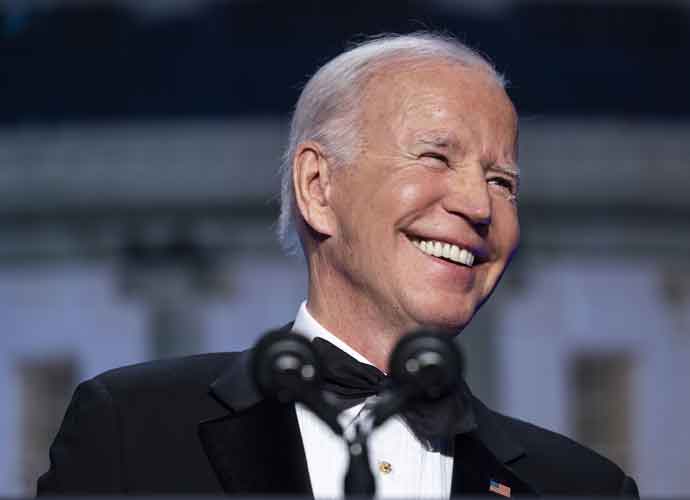Netflix’s ‘The Little Prince’ Movie Review: Aesthetically Stunning Film For Children And Adults

3.5/5
“Draw me a sheep.” The Little Prince demands this of author Antoine de Saint-Exupéry in the eponymous children’s book. In response, the author draws a cardboard box with holes. “This is exactly what I wanted!” The Little Prince cries out. His child-like moment of imagination and wonder, the cornerstone of the beloved French novella, is also the focus of the new animated feature film adaptation. Only this time, the lesson must be taught to a child who, immersed in a literally gray, mechanical world of adult responsibilities, has surrendered that level of joyful simplicity in favor of the known and the comfortable.
Netflix’s ‘The Little Prince’ Movie Review
Directed by Mark Osborne—of Kung Fu Panda fame—and with an English language-release boasting the voice talents of Jeff Bridges, Rachel McAdams, Marion Cotillard and Paul Rudd, to name a few, the Netflix distributed film follows a different route than past screen versions of the The Little Prince, choosing instead to place the literary work within the larger story of a Little Girl during the summer before school. A high-achiever, or rather a high-achiever by force, her power suit-clad mother (McAdams) manages all aspects of her life, manifesting this control in the form of a wall-sized “Life-Board” for full comedic effect. With her study times, meal breaks, and sleep schedule coordinated with an innumerable amount of labeled magnets, the Little Girl lives in a world dictated by routine and expectations. Needless to say, the pressure leads to her botching a Werth Academy (a rather vicious play on words) admissions interview, forcing her mother to desperately move neighborhoods to secure her acceptance into the prestigious school; that alone should make the film required viewing for the majority of the U.S.’s young college applicants. Their new neighborhood, a collection of indistinguishable, square shaped residences that look straight-out-of-the ultra-modern town of Jacques Tati’s Playtime, houses equally homogenous gray-suited people. The only break from the “normality” of the new community, captured in hilariously grid-like aerial shots, is the dilapidated old country house next-door.
The Little Girl soon finds out who lives next door when a rusty airplane propeller crashes through her living room wall, interrupting her study time. Called The Aviator (Bridges), a quirky old man with a reputation for being strange and troublesome, he befriends the Little Girl when he passes along a page of his story of The Little Prince. An animated duplicate of the actual novella, down to the exact illustrations, her wariness and skepticism about the story fades to curiosity as she and the old man develop a friendship, shirking her responsibilities in the process.
As she plunges into the Little Prince’s story, the tale of a young boy The Aviator meets in the dessert, who has travelled away from his asteroid home and beloved Rose (Cotillard), the crisp 3D animation gives way to breathtaking stop-motion. The Little Prince and The Aviator come to life as delicately carved wooden puppets, their world comprised of papers and fabrics of varying color and transparency. The craft behind these hand-made animated sequences cleverly represents of what it’s like to read a book and imagine the places, to have the pages come to life. Interspersed between the budding friendship plot of an old man who refuses to grown up and a little girl who has grown up to soon, the Little Prince’s travels to the various asteroids allegorize the parts of the adult world the Little Girl has come to accept. A man with a large hat only responds to praise and affection; a king with false power and influence fails to set the sun; an accountant who aims to own all the stars, and cares of only wealth. These are iconic to the original work, complemented by the twinkling, wonder-filled Hans Zimmer score, and they shine so brightly that the detailed 3D world that book-ends the sequences begins to look dull in comparison, but that’s likely the point. Like the Little Girl, I wanted the sequences to continue, rather than be interrupted by the routine of her reality, which later crashes down on their friendship with the stark realizations and limitations that come with knowing someone of an advanced age.
The Little Prince is not quite a children’s book. With existentialist themes spread throughout the little boy’s journey, Exupéry’s work touches on love, life, and the acceptance of death (which touch on the author’s real-life experience in the dessert as a military pilot). This is a lot for an adult, let alone a child to handle, and while the film attempts to use its larger context to simplify Exupéry’s ideas, the story quickly becomes weighted down with asides and heavy exposition (an overly on-the-nose English translation of the dialogue might also be to blame). It’s third act, meant to serve as a light bulb moment for the Little Girl in a time of existential crisis, becomes an unnecessarily-extended dream sequence that features a twist on the Little Prince’s character that most die-hard fans will strongly oppose. The film stumbles through the finish line, tripping over it’s own explanations about life and responsibility, burying its saddest moment in a tangential adventure sub-plot to find the Little Prince. Osborne pushes the audience to the edge of what a children’s film can discuss, death and fear of the unexpected, and backs away.
The Little Prince works best when it walks the line between child-like wonder and babying its audience. Though marketed as a children’s film, Exupéry’s novel is not so easily defined, and the film, despite a strong two-thirds, ignores its own lesson and takes the comfortable route of a children’s film, complete with happy ending. Osborne’s film works best when unafraid to show its assumedly younger audience the harsher realities of life and of love, using the Little Prince’s message as a tool to work through the sadness and fear of growing up. Regardless of the lack of risk, The Little Prince stands as an aesthetically stunning introduction to one of the greatest French novellas of the twentieth century, to which both parents and children can connect.
Get the most-revealing celebrity conversations with the uInterview podcast!







Leave a comment